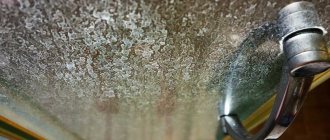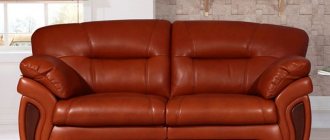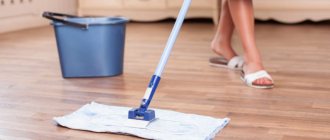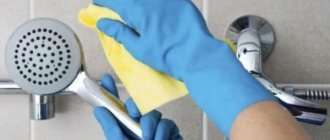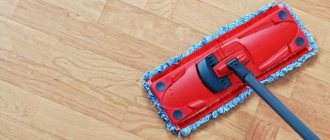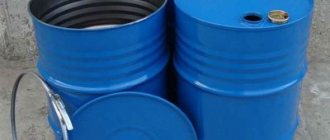After repeated use of the shower stall, unpleasant deposits and stains appear on its surfaces. There are a million ways to clean a shower stall. But not all of them work. We will tell you in detail about the most effective means and methods in the fight against plaque and other contaminants. After reading the article, you will receive a detailed action plan to prevent plaque from appearing in your shower stall again.
A sparkling clean shower every day is possible Source freewallpapers.com
Simple rules for a clean shower stall
If you clean your shower tray and walls daily, you won't be bothered by heavy stains. It will be enough to devote only five minutes a day to cleaning. This is much less than the time it will take to remove any accumulated dirt. So here's what to do.
Every time after taking a shower, rinse the walls and tray, then be sure to dry the interior surfaces of the cabin using just a glass squeegee, and then wipe the surfaces with a dry rag or towel. This way, you can easily get rid of drops, which, in turn, when dry, will leave behind plaque and stains.
After this, make sure that there is no dirt left on the pallet either. To do this, run your hand over the surface of the tray. If you find slightly rough areas, simply rinse with water and wipe dry again. But if you notice any dirt that is quite persistent, you should treat it with a soft brush.
Very important! Remember to leave the shower door open. This will dry the cabin faster and protect it from mold and other fungi.
It is better not to use sponges with a hard coating Source spim.ru
How to apply a water-repellent coating: step-by-step instructions
The surface must be thoroughly washed, especially joints and seams.- Wipe with a dry cloth or wait until it dries naturally.
- Degrease with alcohol, ammonia or a special degreaser.
- Apply a hydrophobic glass cleaner to a non-woven fiber cloth. Treat the shower stall with it.
- Remove the matte “film” that appears by polishing movements using microfiber.
- Having done everything according to the rules, you will receive protection for an average of 2-3 months.
Important condition! If the shower room is below +10°C during treatment, the product will not fix.
Cleaning tools
Preventative care is recommended a couple of times a month. But if you thoroughly clean the shower stall after each use, general cleaning once every three to four weeks will be enough. When cleaning, it is necessary to do it delicately, so it is better to avoid:
- sponges with a rough and hard surface;
- brushes made of iron and metal;
- scrapers with sharp edges;
- abrasive powders;
- products containing aggressive chemical elements.
The consequences of such an arsenal can be both small and invisible scratches and large chips and cracks. To properly clean the cabin, you will need soft sponges, rags, synthetic brushes, rubber scrapers and special cleaning products. With their help, you can get rid of dirt without damaging the shower stall. First of all, you should start cleaning the walls and doors.
In order for the shower to retain its original appearance for a long time, it must be washed correctly Source archi-glass.com.ua
Subtleties of the process
Limescale is a mixture of calcium and iron salts that periodically appears on the surfaces of the shower stall after the water dries. A cloudy film that spoils the appearance is also caused by the residues of cleaning and detergent compounds. Washing a shower stall is not an easy process, since it has a rather complex design solution. Every part of it - walls, door, handles, tray, shower heads - must be cleaned regularly.
The salt residue should be disposed of correctly. What is the best way to clean limescale in order to preserve the beauty of modern materials? This question often causes difficulties for many. But don't be afraid. There are many options for cleaning products and detergent formulations to combat this problem. You just need to subject each of them to careful study. Only then can you start cleaning.
There are three types of shower device care.
- Current. This is done after every shower. It consists of rinsing the internal surfaces first with hot and then with cold water, then wiping them thoroughly.
- Basic. The frequency of execution is from 1 week to 1 month. Includes cleaning with detergents, rinsing and wiping dry.
- Intensive. This is carried out using strong chemicals in case of prolonged downtime of the cabin without use or in case of old plaque.
Without proper regular maintenance of your shower stall, cleaning it will become more and more difficult each time. And at some point you will realize that it is not possible to remove all the pollution.
As a result, washing this plumbing structure must be approached with all responsibility. Cleaning must be systematic and thorough. Only then will the shower stall delight you with its impeccable appearance and high level of performance.
Remember that shower devices may vary. Some models have plastic walls, while others are made of glass. There are also designs that are simply attached to the walls of the bathroom. First of all, find out what type of shower stall you have, and what surface materials will need cleaning. The choice of cleaning products will largely depend on this.
In addition, do not forget that the warmth and dampness of the bathroom are ideal conditions for the appearance of mold. And black mold is not only unsightly - it poses a real health hazard. Careful maintenance of order and periodic ventilation are suitable as preventive measures.
Let's consider an approximate procedure for cleaning a shower device:
- We remove bath accessories;
- wet all surfaces with water;
- apply selected household chemicals, wait the required time;
- rinse;
- remove water using a soft scraper;
- wipe all elements dry with a cloth;
- We treat all parts with glass cleaning composition to add shine.
Cleaning the walls of the shower stall
There are various models of shower cabins, where the walls and doors are made of glass or plastic. But regardless of the materials, surfaces still become cloudy over time. This is more noticeable on surfaces made of transparent material, while on matte surfaces the coating is less noticeable. But, nevertheless, plaque remains an unsightly and even unpleasant effect that you want to get rid of. Cleaning methods for plastic and glass surfaces are different. Next, we’ll look at how to clean a shower stall, depending on its type.
What causes soap stains and limescale deposits?
Even if tap water meets the standards, it contains mineral salts. After a shower, water droplets remain on the glass surface. If they are not wiped off immediately, they dry out: the moisture evaporates, but the sodium and calcium remain in place, forming unsightly white marks.
Plastic walls and doors
Here are a few tricks on how to clean a plastic shower stall. There are special products for cleaning plastics, which include products made from polymers. After spreading the product over the surface, leave it for a couple of minutes, so it will be more effective at removing dirt. Plastic is a material much softer than glass. When cleaning, it is recommended to use only sponges and rubber scrapers; they will not cause any harm to the surface.
When cleaning your shower stall, don't forget to take care of yourself. Follow important safety precautions. When working with aggressive substances, be sure to wear a mask and gloves. And if you are inside the cabin, do not close the doors under any circumstances. Chemicals quickly accumulate in the air. Inhaling them can cause serious poisoning.
When working with chemicals, do not forget to wear protective gloves Source picdn.net
See also: Catalog of companies that specialize in swimming pools and related equipment
Toothpaste is one of the folk remedies for cleaning the shower stall to get rid of plaque. You need to spread the paste on the dirty stain and leave it for a while. Then rinse with warm water. This simple, but very effective method gently removes dirt from polymer coatings. At the end of the procedure, rinse with warm water and wipe with a dry cloth.
Household chemicals
Special household chemicals will help you clean your shower stall quickly and easily. When choosing, give preference to sprays, gel or liquid products - they will not scratch the surface, but at the same time effectively get rid of plaque and stains. The most popular products include: Cif, “Mr. Muscle”, “Sanelit”.
Specialized household chemicals will help keep your shower stall clean and shiny. Before use, make sure that the product is suitable for the surface to be cleaned
You can deal with dirt using melamine sponges. They are easy to use and, according to housewives, effectively cope with the task assigned to them.
Cleaning instructions:
- Soak the sponge in water and wring it out well.
- Wipe all surfaces thoroughly to remove dirt.
- Dry the booth with a microfiber cloth to remove any remaining moisture.
Melamine sponges effectively cope not only with limescale and soap stains, but also with rust, yellowing and mold.
Pallet cleaning
Let's move on to the next cleaning step - cleaning the trays. They are usually made of acrylic - a fairly light but durable material. Most contaminants are easily removed from such a surface. It is enough to soap the dirty surface and clean it with a sponge. You will learn further about how to clean the shower stall from soap stains and limescale deposits.
In this case, toothpaste will come to the rescue. Apply it to a sponge and clean the entire surface of the tray, then rinse with water. Another good option is silver cleaners. They are great for removing dirt from acrylic.
You will learn further about how to wash a shower stall if there is rust or very old stains on the tray. Fill the entire tray space with warm water, add vinegar in a 1:1 ratio and forget about it for a couple of hours, and sometimes even overnight. When the time is up, all you have to do is rinse off the water, rinse thoroughly and then wipe the surface.
A simple but effective remedy Source sbermarket.ru
Additionally, shower trays are sometimes made from materials such as cast iron and steel . For aesthetics, all this is covered with a layer of enamel. But this coating is too thin, so it can be easily damaged or scratched when cleaning. Never use abrasive products to clean such surfaces. Otherwise, very small scratches will appear on the surface, which will increase over time and ruin the appearance of the surface. Such cracks also accumulate harmful microorganisms.
The way out of this situation is special means for cleaning enamel. Application is as follows: use a soft sponge to apply the cleaner to the entire surface of the tray, wait a while and rinse with water. If you don't like the result, you can still try treating the surface with lemon juice or vinegar. Don't worry, these products are completely harmless to your enamel. But do not forget to always rinse the surface with warm water and dry it after the procedure.
Natural stone trays remain clean and retain their color for several years. Therefore, no special care is required for these pallets. If lime deposits appear, just use a steam cleaner and a regular clean cloth. But any surface can be brought into poor condition. If this happens to a stone, you will need special chemicals.
Shower tray made of natural stone Source archiexpo.com.ru
Unlike real stones, artificial stones can darken over time. To get rid of dark stains, use a concentrated toilet cleaner. Don't forget to wear protective gloves. After the procedure, rinse the tray very thoroughly with water.
Cleaning various booth surfaces
A shower stall is a complex device that consists of several elements made of various materials. To clean it correctly, you need to choose products that will effectively and carefully clean all surfaces.
Pallet
When cleaning the shower tray, consider the material from which it is made. Acrylic, cast iron or enameled steel are most often used.
Acrylic coating is considered the most “delicate”, therefore it is not recommended to use acids, hard scourers and scrapers, compositions with abrasive particles, alcohol, or other aggressive substances for its processing.
Optimal products for acrylic: dishwashing liquid, laundry soap, toothpaste, special household chemicals.
Acrylic trays require a special approach to cleaning and choosing a detergent, since aggressive compounds and abrasive substances damage the surface and lead to irreversible damage to plumbing fixtures
Cast iron and steel trays with an enamel coating can be cleaned with household chemicals ( Comet, Pemolux) or folk remedies (for example, vinegar, citric acid) . It is not recommended to use steel wool, hard sponges or strong abrasives.
Tile
Some cabin models are not equipped with special walls, but are adjacent to a pallet and walls that are tiled. To clean such a surface, use any bath products or special preparations for tiles. In addition, pay attention to the question of how to clean the joints between the tiles, because this is where dirt often accumulates and mold multiplies.
Read more about cleaning bathroom tiles in this article.
Doors and walls
Polystyrene or plastic is used to make the walls. Soap stains, drops of water, and traces of cosmetics often remain on these surfaces. And with irregular or improper care, they darken and lose their presentable appearance.
You can wash the walls with products that do not contain formaldehyde, chemical acids, or alkalis. The ideal option is special preparations in the form of sprays or liquids for cleaning windows .
To clean, use soft sponges, a polyurethane scraper or a microfiber cloth.
To keep glass doors and walls clean, wipe them dry after each shower.
The doors in the shower stalls are made of glass. To clean them, use household chemicals (window cleaning compounds) or folk remedies (citric acid, alcohol solution, etc.) that do not contain abrasive particles. After cleaning and every shower, thoroughly wipe the doors from water droplets and detergent residues to avoid the accumulation of dirt.
Get rid of black mold
Now you will learn how to clean your shower stall when there is mold in it. The presence of black mold can be found in poorly ventilated rooms where water constantly accumulates and sits idle. An excellent antifungal remedy for such mold is a mixture of table vinegar and ammonia. Simply mix these two ingredients in equal portions and clean the surface of the mold with the solution. After a short period of time, rinse the area with a solution of soda in a ratio of one teaspoon of soda to 200 milliliters of water.
Black mold in the shower stall Source stavnistavim.ru
Safety regulations
When working with cleaning products, you must follow safety rules: wear rubber gloves. When spraying or applying, do not close yourself inside the shower stall. Is it dangerous!
- When choosing a particular cleansing product, you need to pay attention to its safety. The best option would be that it has no odor and contains environmentally friendly ingredients. Please read the instructions carefully before cleaning.
- Before using special equipment, you need to let a lot of steam into the shower stall. This can be done by simply opening a tap with hot water (but not boiling water!). Hot steam will soften limescale deposits, making further cleaning much easier.
Important! The ideal option is to use a steam generator! The device will make it much easier and faster to clean limescale deposits and also kill bacteria.
The best detergents
More and more bathroom and plumbing cleaning products are appearing on store shelves. That's why it's so hard to settle on just one thing. Every housewife thinks about how to clean the shower stall from soap solutions and limescale. The reputation of the product among users is important for choosing it. Here are the most popular products:
- " Tilex " is a country of origin in the USA. This product for shower cabins does an excellent job of removing fat deposits and other contaminants. Once applied to the surface, it does not need to be washed off.
Effective remedy Source ubuy.com.tr
- " Cif " - the Netherlands and the UK are responsible for production. This product is popular all over the world. Has a creamy consistency. There are different versions of this product, both with whitening and with the addition of fragrances.
All-purpose cleanser Source nonfood.gc-sm.com
Using Melamine Sponge
The good thing about a melamine sponge is that when using it, you don’t need to apply and rinse off cleaning solutions. According to the principle of operation, it is similar to an eraser, only it erases not traces of a graphite pencil, but dirt.
Melamine sponge.
Use the sponge as follows:
- one edge of the sponge is moistened with water;
- remove dirt using circular movements;
- The cleaned surface is rinsed with warm water.
A melamine sponge can be used to remove lime and grease deposits, soap stains, and rust stains on plastic, enameled and chrome surfaces. It is not recommended to use items to clean trays made of glossy artificial stone and acrylic.
spring-cleaning
It is necessary to carry out general cleaning of the shower cabin once every two weeks. Also, if you have been away from home for a long time or have not used the shower, in this case it is also worth thoroughly cleaning the stall.
For general cleaning there is the following sequence:
- Cleaning walls and plastic structures . Spray the detergent onto the dirty surface, wait a couple of minutes, then rinse with warm water. Clean seams and crevices especially carefully; mold and lime stains most often appear here.
- Glass doors . Special sprays for windows and mirrors work well on soap stains on glass. A vinegar solution, citric acid or ammonia also bring a positive result. And don’t forget to wipe the surfaces dry at the end.
- Clean additional parts . Mineral salts commonly accumulate on faucets and spa faucets. Use special products and clean them from dirt.
- Wash the tray . When finished cleaning, wash the tray itself. But to avoid damaging the appearance, choose a product in accordance with its material.
On a note! If dirt cannot be removed with chemicals and other methods, use a steam cleaner. There is little that can withstand the pressure of hot steam.
Be sure to wipe the shower stall dry Source chistodoma.com
Prevention
To ensure that your shower always looks clean and tidy, follow the rules for its operation and also provide it with proper care:
- After showering, rinse all surfaces with cool water to remove any detergent or cosmetic residue.
- Wipe glass and plastic elements with a rubber scraper.
- Wipe the tray, walls and doors with a soft, dry cloth.
- Once a week, clean surfaces with special gels or sprays.
- Periodically perform general cleaning, thoroughly cleaning every corner of the shower stall.
To maintain cleanliness in the bathroom, regularly carry out preventative cleaning of the room and cleaning the shower stall.
Folk remedies and special household chemicals will help to clean the shower stall from various types of contaminants. To maintain the original appearance of glass and plastic, provide them with proper care and carry out preventive cleaning.
Briefly about the main thing
So, as we have learned, the most important thing when cleaning all surfaces of a shower stall is to use soft tools so as not to ruin the material. Avoid hard or iron jaws, pointed scrapers, or other tools that scratch the surface. We also looked at how to choose the most effective cleaning product, taking into account the material from which the shower pan or panels are made. Moreover, if you wipe the surfaces dry after each shower, you can forget about plaque forever.
What are water-repellent glass coatings and why are they needed?
The most effective prevention, which does not require extra effort to maintain cleanliness, is the application of a hydrophobic coating during the production of the product. It repels lime deposits and detergent residues, prevents the formation of plaque and makes everyday work much easier for the housewife. This is an additional option offered by leading manufacturers, including.
In addition, there are water-repellent products for shower glass for home use. Their composition is reminiscent of those aerosols that are applied to car mirrors for better visibility in bad weather. Fluorine-containing compounds create an “Anti-drop” effect. They do not allow water flows to linger in the form of drops, so until the water repellent is completely washed off, almost no plaque is formed.
Cleaning plastic surfaces
To clean the plastic from which the walls and doors of the shower stall are made, you should carefully consider the choice of product. It should not contain aggressive acids, alkalis, alcohols or formaldehyde. You should not use abrasives; it is better to give preference to cleaning creams and aerosols. Before using the product, try it on an inconspicuous area. It is recommended to wash the plastic as often as possible, and wash off the soap scum after each use. If this is not done, the plastic will inevitably darken.
Plastic is a fairly unstable material, so use sponges and soft-surfaced cloths to clean it.
Advice! Dishwashing detergents are effective in combating soap scum and dirt.
General rules of care
There are general rules for caring for a shower stall that will help you do general cleaning effectively and as rarely as possible:
- After each use of the booth, rinse it with clean water and wipe dry.
- When the cabin is not in use, try to leave the doors open to allow natural ventilation and reduce humidity.
- Clean every week using a special product for shower cabins, after which thoroughly rinse the cabin and wipe dry again.
How often should your cubicle be cleaned?
Caring for such a comfortable bathroom is divided into three types:
- Daily cleaning. It is carried out every day, immediately after hygiene procedures. First, rinse everything in the booth with hot water, then rinse with cool water and wipe all surfaces with a dry cloth.
- Basic cleaning, which is recommended to be carried out no more than once a week using cleaning components. At the end of cleaning all surfaces, they should be thoroughly rinsed with warm water, and then wiped with a dry cloth.
- Intensive cleaning, consisting of the use of more aggressive cleaning agents, is required in cases where there is a strong limescale deposit or when it has not been used for its intended purpose for a very long time.
Himitek Polycor-Gel
Himitek cleaning gel, produced in Russia, is designed to clean shower stalls, but also other various bathroom surfaces. The thick consistency holds the gel well on vertical surfaces.
The gel is gentle on chrome surfaces due to the presence of orthophosphoric acid in its composition. The product is effective against limescale, rust, and stubborn salt deposits formed when using hard water.
Himitek Polycor-Gel is a hypoallergenic substance, which is especially important for people with sensitive skin and allergies. Leaves a pleasant aroma after use.
Himitek Polycor-gel, acid concentrate.
MEINE LIEBE
MEINE LIEBE Shower and Bathtub Cleaner, made in Russia, is intended for acrylic products, although it can be used to clean items made from other materials. It perfectly dissolves contaminants such as mold, mildew, and limescale on the walls of shower cabins, is easily washed off, and leaves clean and transparent surfaces after rinsing.
The composition of the product includes a complex of fruit acids that are safe for use and does not contain chlorine. There is no strong odor, it produces a fruity, light aroma. Benefits of shower cleaner:
- Spray format (facilitates uniform application of the product).
- Affordable price (check the current price on Yandex.Market).
- Manufactured under the control of the German company GRUNLAB GMBH.
MEINE LIEBE shower and bath cleaner.
